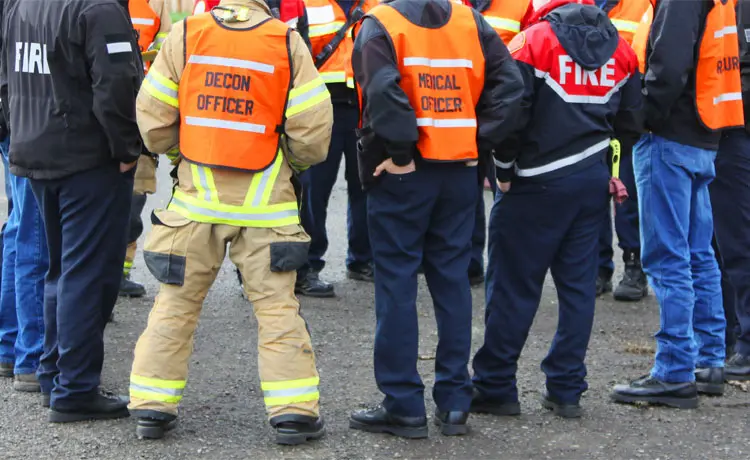When disaster strikes, the capabilities of emergency personnel may be stretched to the limit. A Community Emergency Response Team (CERT) can effectively act as an extension of emergency services during your community's time of need. Setting up a CERT program before a disaster that is ready to act can be extremely valuable in providing life-saving aid until help arrives. CERT volunteers are trained in disaster management and survivor search and rescue, and can deliver life-sustaining medical care.
According to FEMA, there are currently 1,774 approved CERT programs operating nationwide.
Six Steps for Setting Up A CERT Program
1. Determine your community's needs Your starting point in setting up a CERT program should be to complete a community disaster preparedness assessment. How will a CERT perform alongside emergency personnel? What kinds of roles can volunteers play in your neighborhood? What types of hazards does your community face? Remember: CERT members are not only helpful in an emergency situation; they can also play a crucial role in special community projects, such as distributing disaster supplies, acting as medical staff during local events and assisting community members with fire safety. 2. Identify your resources Assess how much setting up a CERT program will cost. Factors affecting cost can include the number of instructors that will be needed, facilities and equipment required, possible funding for events and program maintenance activities, etc. When it comes to funding, there are a few avenues to explore:
- Local funding
- Grants
- Forming a 501(c)3 organization for non-profit status, which allows for fundraising
3. Recruit volunteers The success of your CERT program can hinge on getting support from the right people, such as local officials and community stakeholders. Potential candidates may come from industry and government workers, and community groups. Be upfront about team requirements when recruiting participants. Identify a volunteer's needs and expectations. Never underestimate someone's abilities. Every volunteer can contribute to a CERT and you should try your best to match those skills with CERT roles before, during and after a disaster. 4. Obtain training materials and customize training to your community The newly updated QuickSeries® CERT Field Operations Guide, adapted from FEMA's 2020 CERT participant manual, provides critical information and resources for training CERT volunteers. Your CERT program can be useful for anyone who wants to become more involved in making their community a safer place. As a program manager, you should attempt to tailor trainings to anyone who wants to participate. This may include finding reasonable accommodations for volunteers with special needs. 5. Establish a training framework CERT courses are given by a team of first responders who have the proper knowledge and expertise. Instructors should complete a CERT Train-the-Trainer (TTT) course (given by their State Training Office for Emergency Management or the Emergency Management Institute) to learn appropriate training tactics. 6. Train volunteers and define a maintenance strategy Training volunteers requires several steps, including setting up registration procedures, purchasing materials and equipment, and more. When training is over, you can keep volunteers engaged with periodic refresher courses and educational events. Provide drills and workshops so CERT members can practice and improve their skills and training. Exercises should reflect real-life events that can happen within the community. For more information on CERT program setup and maintenance, click here. Looking for print or mobile solutions uniquely tailored to your community? Get in touch with one of our Account Managers today to discuss how QuickSeries can support your program/message!
